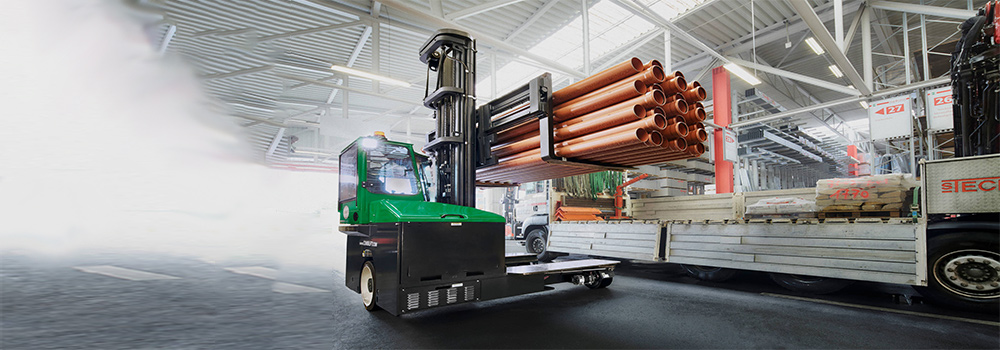What is a Side Loader Forklift?
A side loader forklift, also known as a side loader, is a specialized type of industrial lifting vehicle designed to pick up and transport long, heavy, or bulky loads that may be difficult to handle with a traditional forklift.
Unlike a standard forklift where the forks are located at the front of the vehicle, a side loader’s forks are positioned on its side, allowing the operator to load and unload materials from the side. This design makes it ideal for navigating narrow aisles and handling items such as timber, piping, steel bars, and sheets.

Key features of a side loader forklift include:
- Side Mounting: The primary feature that distinguishes side loaders from other forklifts is the sideways orientation of the lifting mechanism. This allows for the efficient handling of long or wide loads in narrow aisles.
- Operator Cabin: The operator’s cabin is usually situated at the centre of the machine, providing excellent visibility in both directions. Some models have a cabin that can rotate or move along with the forks, enabling better control and visibility.
- Load Stability: By carrying the load at the side, the weight distribution is more balanced, which increases stability and reduces the risk of tipping.
- Maneuverability: Side loaders are highly maneuverable, often featuring four-wheel steering. This makes them ideal for work in tight spaces and narrow aisles.
- Versatility: Many side loaders can work both indoors and outdoors, and are capable of handling a variety of materials, making them versatile additions to many types of operations.
- Safety: Side loaders are designed with enhanced safety features. For instance, carrying the load at the side improves the operator’s visibility, reducing the risk of accidents.
In industries like woodworking, steel service centres, and construction where handling long, bulky loads is common, side loader forklifts can significantly improve efficiency and safety.